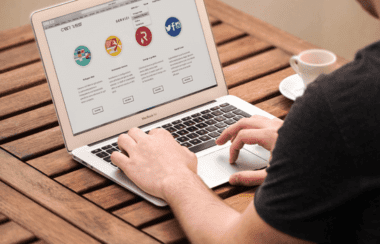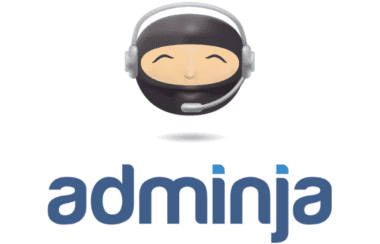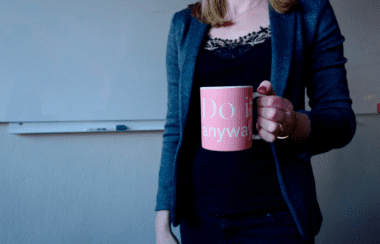Five Steps to Building a Powerful Freelance Brand Identity
By Craig Cannings

What would you say if I told you that YOU are a brand? Just like a popular breakfast cereal or a favorite coffee chain, you need to stand out, and that’s why a powerful freelance brand identity is essential in today’s competitive market.
“Regardless of age, regardless of position, regardless of the business we happen to be in, all of us need to understand the importance of branding. We are CEOs of our own companies: Me Inc. To be in business today, our most important job is to be head marketer for the brand called You.”
– Tom Peters
In this blog post, we’ll help you define your brand, establish a professional presence, create content strategies, network with potential customers, and measure success. Now let’s discuss the keys to creating a freelance brand identity so that you can start building an effective presence right away!
Table of Contents:
– Defining Your Freelance Brand
– 3 Steps to Creating a Freelance Brand Identity
– Research
– Establishing Your Professional Presence
– Crafting Your Professional Bio and Headshot
– Developing Your Content Strategy
– Networking and Connecting with Clients
– Measuring the Success of Your Branding Efforts
Defining Your Freelance Brand
A personal brand is more than just a logo or color scheme; it’s the representation of your professional identity and values. Ultimately, a freelance brand identity is critical to fostering confidence in potential customers and demonstrating expertise within your industry.
So what exactly is a personal brand? It’s an experience that communicates who you are and what you offer to the world. Your personal brand is comprised of a variety of components, including logos, colors, typefaces, messaging, and imagery, all merging to form an individual character that makes you stand out from the crowd.
In our Personal Branding Success course, we define branding as “the process of bringing to light all that makes YOU extraordinary and attractive to your target client audience!”
Specifically, we recommend exploring the 9 Ps to Personal Branding Success that fit into two important phases: the assessment phase and action phase. When creating a freelance brand, you’ll first assess your personality, principles, past experience, passions, proficiencies, and people. Then you’ll be ready for action, defining your purpose, presentation, and promotion.
Let’s look at this process in more detail.
3 Steps to Creating a Freelance Brand Identity
To get started on creating your own unique freelance brand identity, consider these three key steps: research, self-reflection, and creative expression.
1. Research
Research involves looking into industry trends and understanding how other professionals in similar fields have created freelance brand identities. Examining how others in the same niche have represented themselves can give you an idea of what resonates best with their target audience, providing inspiration for your own marketing efforts.
Additionally, researching consumer behavior can provide valuable information about the type of content people are most likely to engage with online, which will be beneficial when crafting marketing materials for social media platforms or websites/portfolios down the line.
2. Self-reflection
Self-reflection requires taking some time to think about who you are professionally:
– What makes you different?
– What do clients value most about working with you?
– How would others describe your work ethic?
This step involves the first six Ps we mentioned above as part of the assessment phase when creating a freelance brand identity. Here are some ways you can use them during self-reflection:
– Describe your Personality and determine which traits would be relevant to your target audience.
– Decide what’s important to you and which Principles drive your core values.
– Reflect on your Past Experience, considering your work background, personal challenges, personal accomplishments, education or training, family experience, hobbies, travels, and anything else that contributes to your story.
– Think about the type of work that energizes you and find ways to link your Passions with your freelance business services.
– Consider your Proficiencies, determining which of your skills are most in demand and how you can turn them into “superpowers.”
– Brainstorm which People you’d like to include in your target audience, starting with broad categories like “small business professionals” and narrowing down to specific categories like “health and wellness professionals.”
Answering these questions honestly will help shape the narrative behind why someone should choose to hire or collaborate with YOU instead of anyone else out there offering similar services.
3. Creative Expression
Once you’ve reflected on the first 6 Ps, it’s time for action and creative expression of your personal brand. First, channel your creativity into defining your Purpose. For example, in our previous blog post, “Quick Guide to Start Your Virtual Bookkeeping Business From Home,” we recommend saying “I would like to build a Virtual Bookkeeping Business so that I can _____________________.”
With any niche you choose, you can define your purpose by developing a statement that shares how your business helps your target client overcome their particular challenges that lead to their desired results.
As you can see, crafting a distinct persona is a key element of your freelance brand, and constructing an identity that can attract clients is critical. Having a distinguished image in the industry helps you create a prosperous freelance career.
Now let’s see how you can implement the next two parts of the action phase (Presentation and Promotion) into the process of building your freelance brand identity. This is where you’ll take your creative expression to the next level as you strengthen your personal brand.
Establishing Your Professional Presence
Building an Online Presence
Your freelance brand requires a strong online presence so it can gain visibility. Now that you’ve completed your assessment phase and purpose statement, you’re ready to work on the next two Ps –– Presentation and Promotion.
Construct an online profile on social media sites like LinkedIn, Instagram, and Facebook that spotlights your expert aptitudes and successes. Make sure you use keywords related to your niche to increase visibility when potential clients are searching for services like yours.
Additionally, create a blog or website where you can share content related to the industry you specialize in. These platforms allow you to showcase your expertise and gain the trust of clients.
Crafting Your Professional Bio and Headshot
Once you’ve established yourself online, it’s time to create a bio that captures who you are professionally. Keep it concise, but make sure it accurately reflects your experience and expertise. Include any honors or recognition you’ve earned in your professional journey so far –– this is particularly essential if you’re just beginning.
Finally, don’t forget about getting a professional headshot taken; this will be used on all your social media profiles and websites, so make sure it looks good.
Establishing your professional presence is an essential step to succeeding as a freelancer. Creating a content plan that’s designed to maximize exposure and attract clients can also help you succeed as an independent contractor.
Developing Your Content Strategy
When it comes to developing a content strategy for freelancers, identifying your target audience and niche market is key. Knowing who you’re trying to reach will help you craft content that resonates with them. For example, if you specialize in graphic design services, your target audience would be businesses looking for branding materials or marketing collateral.
Once you’ve pinpointed the right demographic, generate content that appeals to their wants and desires. Use social media platforms like Instagram and LinkedIn to showcase your work and establish connections with potential customers.
In order to maximize visibility on search engines, it’s essential to implement SEO strategies into your content strategy. This means including relevant keywords throughout your website or portfolio so that when someone searches for terms related to what you offer, they can easily find you online.
Additionally, make sure all the images and videos used on your site are optimized with descriptive titles and alt tags so search engine crawlers can properly index them.
By taking these steps, you can ensure your freelance brand identity has maximum exposure online, which could lead to more traffic being driven towards your website or portfolio, resulting in increased business opportunities over time.
Constructing a content plan that’s specific to your target demographic and specialized field can help create attractive material for social media outlets and exploit SEO tactics to boost visibility.
Networking with potential clients is the next step in taking your freelance business to the next level; leveraging existing networks and participating in industry events are important components of connecting with new clients.
Networking and Connecting with Clients
Networking and connecting with clients is a critical part of building a successful freelance career. Leveraging existing networks and contacts can help you to expand your reach in the industry, while participating in industry events and conferences will provide you with opportunities to make connections with potential clients or collaborators.
In a newsletter article titled “How in-person events can bring visibility to your personal brand,” Ella Orr says, “People have the chance to get to know you more quickly when you meet them in person.” And in addition to attending events and having conversations with potential clients, she recommends speaking at events, providing this crucial advice:
“If your public speaking activities match up to your online presence (your profile, your content, your comments) and what you are offering, in other words your value proposition, you’re giving yourself a head start in building the all-important know, like and trust.”
But before you begin attending or speaking at networking events, it’s important to identify who your target audience is so that you can focus on networking within those circles.
Then you can take steps towards building relationships by attending relevant events such as workshops or seminars where your audience might be present. Exploring professional associations related to your area of specialization could be a useful way to extend your contacts.
To find relevant networking opportunities, research online using sites like Eventbrite, Meetup, Facebook Events, or a simple Google search. As you explore networking opportunities, determine whether you could volunteer or speak at an event, and gather the required marketing materials. For instance, you may want to bring business cards, cue cards with your elevator speech, and an iPad to show your website or portfolio.
Establish goals for each in-person networking event, and remember that sometimes less is more. In our Become a Networking Rockstar course, we like to remind students that “it’s 10 times more valuable to develop connections with 3 quality people at an event than 30 contacts whose names you won’t remember!”
After attending events, stay active online through your chosen social media platforms –– use them strategically. Following up and connecting with other professionals in similar industries will not only help increase visibility but also give people insight into what kind of freelancer/businessperson you are, which may lead them back to working with you one day.
Networking with customers and clients is an indispensable part of building a prosperous freelance business, so make sure you take advantage of the many opportunities available. Once you’ve established connections with your clients, tracking metrics such as social media engagement and website traffic can help gauge the success of your branding initiatives.
Measuring the Success of Your Branding Efforts
Gauging the success of your personal branding initiatives helps guarantee that you are connecting with your intended demographic and building a strong freelance business.
Tracking metrics on social media platforms can help you understand how effective your campaigns have been in engaging with potential clients. You should track engagement such as likes, shares, comments, retweets, etc., as well as followers and impressions. This will indicate whether or not people are interested in what you’re offering and if they’re sharing it with others.
Analyzing traffic to your website or portfolio is another way to measure the success of your personal branding efforts. Look at page views, time spent on pages, clicks through rates from different sources (social media/ads), etc., to determine which content is resonating most with readers and where visitors are coming from.
Evaluating client feedback is also key for understanding how successful your freelance brand identity has been in attracting new customers or retaining existing ones. Pay attention to reviews left on sites like Yelp or Google My Business – these can reveal customer satisfaction levels with services offered by freelancers like you.
Conclusion
As a freelancer, developing your personal brand is an essential part of success. By using the right tactics and strategies, you can create an effective brand presence that will distinguish you from your peers and draw in more customers and clients.
By taking the time to define your freelance brand identity, establish a professional online presence, develop content tailored to your target audience, network with potential clients, and measure how successful these efforts are, creating a freelance brand becomes much easier.
Always remember that YOU are a brand, and make that brand shine!
Take your freelancing career to the next level and join Freelance University! Our comprehensive resources, courses, and support will help you build a successful business.









































































































